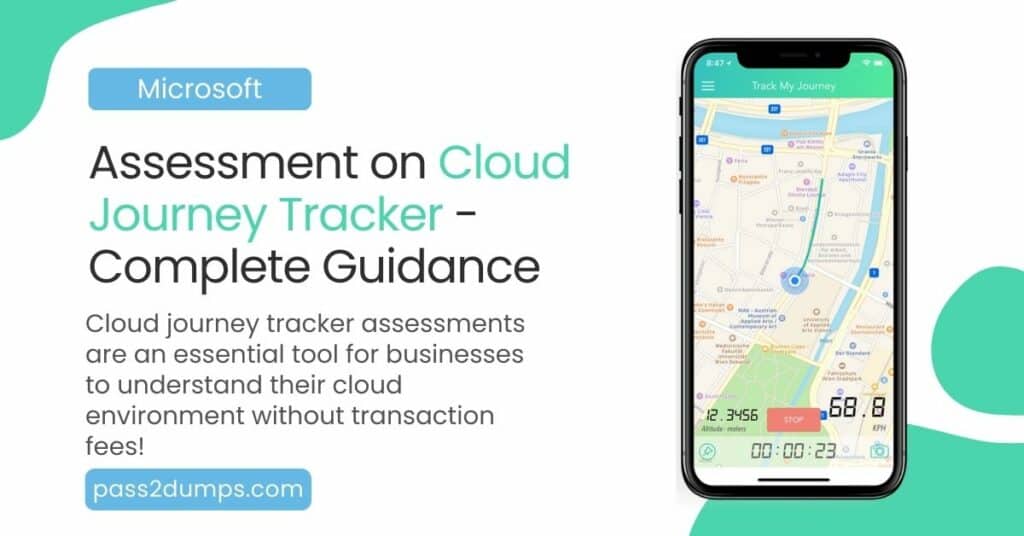Introduction
Cloud journey tracker assessments are an essential tool for businesses to understand their cloud environment and ensure they are making the most of their cloud investments. These assessments provide a comprehensive overview of the current state of a company’s cloud infrastructure, helping to identify areas of improvement and potential risks. They also provide insights into how to optimize cloud performance and reduce costs. By understanding the strengths and weaknesses of their cloud environment, businesses can make informed decisions on how to best utilize their cloud resources. With the right cloud journey tracker assessment, businesses can gain valuable insights into their cloud environment and make sure they are on the right track.
Understanding the Benefits of Cloud Journey Tracker Assessments
Cloud journey tracker assessments are an invaluable tool for businesses looking to make the most of their cloud-based services. By assessing the current state of their cloud environment, businesses can identify areas of improvement and gain insight into how they can optimize their cloud journey.
Cloud journey tracker assessments provide a comprehensive view of a business’s cloud environment, from the initial assessment to the ongoing monitoring and optimization of cloud services. This assessment helps businesses understand the current state of their cloud environment, identify areas of improvement, and develop a roadmap for the future.
The assessment begins with a comprehensive review of the cloud environment, including the cloud architecture, security, and performance. This review helps to identify any potential risks or issues that may be present in the cloud environment. The assessment also evaluates the current cloud strategy and provides recommendations for improving the cloud environment.
Once the assessment is complete, businesses can use the results to create a roadmap for their cloud journey. This roadmap will help businesses identify areas of improvement and develop a plan for optimizing their cloud environment.
Cloud journey tracker assessments are an essential tool for businesses looking to maximize their cloud investments. By assessing the current state of their cloud environment, businesses can identify areas of improvement and gain insight into how they can optimize their cloud journey. With the help of a cloud journey tracker assessment, businesses can develop a roadmap for the future and ensure that their cloud investments are optimized for success.
Preparing for a Cloud Journey Tracker Assessment
Preparing for a Cloud Journey Tracker Assessment is an important step in the process of migrating to the cloud. The assessment is designed to identify the risks and opportunities associated with the cloud migration process, as well as the steps needed to ensure a successful transition.
The assessment begins with an analysis of the current IT environment and the organization’s goals for the cloud migration. This includes an evaluation of the existing IT infrastructure, applications, and data, as well as an assessment of the organization’s business objectives and desired outcomes. The assessment also takes into account the organization’s budget, timeline, and other factors that may impact the success of the migration.
Once the assessment is complete, the organization can then begin to develop a plan for the cloud migration. This plan should include a timeline for the migration, as well as a list of tasks and resources needed to complete the migration. It should also include a detailed risk assessment, which will help the organization identify potential risks and develop strategies to mitigate them.
The next step in the assessment is to evaluate the cloud provider’s offerings. This includes assessing the provider’s capabilities, such as the security measures they have in place, the availability of support services, and the cost of the services. The organization should also consider the provider’s reputation and customer reviews.
Finally, the organization should review the assessment results and develop a plan for the cloud migration. This plan should include a timeline for the migration, as well as a list of tasks and resources needed to complete the migration. It should also include a detailed risk assessment, which will help the organization identify potential risks and develop strategies to mitigate them.
Preparing for a Cloud Journey Tracker Assessment is an important step in the process of migrating to the cloud. The assessment is designed to identify the risks and opportunities associated with the cloud migration process, as well as the steps needed to ensure a successful transition. By taking the time to properly prepare for the assessment, organizations can ensure that their cloud migration is successful and that their data and applications are secure.

Analyzing the Results of a Cloud Journey Tracker Assessment
Analyzing the results of a Cloud Journey Tracker Assessment is an important step in understanding the progress of a cloud migration project. The assessment is designed to measure the success of the project in terms of cost savings, time savings, and other key performance indicators. It can also provide insight into areas where further improvement is needed.
The Cloud Journey Tracker Assessment is a comprehensive assessment of the progress of a cloud migration project. It evaluates the current state of the project and compares it to the expected outcomes. It also provides a roadmap for the future of the project, highlighting areas where further improvement is needed.
The assessment begins with a review of the current state of the project. This includes an analysis of the project’s progress in terms of cost savings, time savings, and other key performance indicators. It also evaluates the project’s overall success in terms of customer satisfaction, scalability, and security.
Once the current state of the project is evaluated, the assessment then moves on to the future of the project. This includes a review of the project’s roadmap, highlighting areas where further improvement is needed. It also looks at the potential for additional cost savings, time savings, and other key performance indicators.
The assessment also provides a comprehensive review of the project’s security posture. This includes an evaluation of the project’s security architecture, security policies, and security controls. It also looks at the project’s ability to protect against data breaches, malicious actors, and other security threats.
Finally, the assessment provides a review of the project’s scalability. This includes an evaluation of the project’s ability to scale up or down as needed, as well as its ability to handle large amounts of data. It also looks at the project’s ability to meet the demands of its users.
Analyzing the results of a Cloud Journey Tracker Assessment is an important step in understanding the progress of a cloud migration project. The assessment provides a comprehensive review of the project’s current state, its roadmap for the future, and its security posture. It also provides insight into areas where further improvement is needed. By taking the time to analyze the results of the assessment, organizations can ensure that their cloud migration projects are successful and cost-effective.
Implementing Recommendations from a Cloud Journey Tracker Assessment
Implementing recommendations from a Cloud Journey Tracker Assessment is an important step in the process of moving an organization’s IT infrastructure to the cloud. This assessment is designed to provide an in-depth look at an organization’s current cloud infrastructure and identify areas of improvement. It is an essential tool for organizations that are looking to optimize their cloud usage and maximize their cloud ROI.
The assessment typically begins with an analysis of the organization’s current cloud infrastructure. This includes an evaluation of the cloud architecture, the security and compliance posture, and the cost structure. The assessment also looks at the organization’s cloud strategy and how it aligns with the organization’s overall business objectives. Once the assessment is complete, the Cloud Journey Tracker will provide a set of recommendations for improving the organization’s cloud infrastructure.
The recommendations from the Cloud Journey Tracker Assessment can range from minor tweaks to major overhauls. For example, the assessment may recommend changes to the organization’s cloud architecture, such as moving to a multi-cloud or hybrid cloud environment. It may also recommend changes to the organization’s security and compliance posture, such as implementing additional security measures or implementing new compliance standards. Finally, the assessment may recommend changes to the organization’s cost structure, such as renegotiating contracts or optimizing cloud usage.
Once the recommendations from the Cloud Journey Tracker Assessment have been identified, the next step is to implement them. This typically involves working with the organization’s IT team to make the necessary changes to the cloud infrastructure. It may also involve working with external vendors and partners to ensure that the changes are implemented correctly.
Implementing the recommendations from the Cloud Journey Tracker Assessment is an important step in the process of optimizing an organization’s cloud usage and maximizing its cloud ROI. By taking the time to analyze the organization’s current cloud infrastructure and identify areas of improvement, organizations can ensure that their cloud usage is as efficient and cost-effective as possible.
Leveraging a Cloud Journey Tracker Assessment for Long-Term Success
Leveraging a Cloud Journey Tracker Assessment for Long-Term Success is an essential part of any successful cloud journey. The cloud journey tracker assessment helps organizations identify their current state of cloud adoption, identify areas of improvement, and develop a roadmap for achieving long-term success.
The assessment begins with an analysis of the organization’s current cloud environment. This includes an evaluation of the existing cloud infrastructure, applications, and services. The assessment also looks at the organization’s current cloud usage and cost structure. This helps to identify areas of potential improvement and cost savings.
The assessment then looks at the organization’s cloud strategy. This includes an analysis of the organization’s cloud objectives, the desired outcomes, and the timeline for achieving those outcomes. The assessment also looks at the organization’s current cloud governance model and identifies any gaps in the governance process.
The assessment then looks at the organization’s cloud architecture. This includes an evaluation of the existing cloud architecture, the security posture, and the scalability of the cloud environment. The assessment also looks at the organization’s current cloud operations and identifies any areas of improvement.
Finally, the assessment looks at the organization’s cloud journey roadmap. This includes an analysis of the organization’s current cloud journey, the desired outcomes, and the timeline for achieving those outcomes. The assessment also looks at the organization’s current cloud governance model and identifies any gaps in the governance process.
By leveraging a Cloud Journey Tracker Assessment for Long-Term Success, organizations can identify areas of improvement, develop a roadmap for achieving long-term success, and optimize their cloud environment for maximum efficiency and cost savings. This assessment helps organizations to ensure that their cloud journey is successful and that they can maximize the value of their cloud investments.
Conclusion
Cloud journey tracker assessments are a valuable tool for organizations to measure their progress and success in cloud adoption. They provide an in-depth look at the cloud environment, helping organizations to identify areas of improvement and develop a roadmap for future success. By leveraging cloud journey tracker assessments, organizations can gain insights into their cloud environment, optimize their cloud operations, and increase their overall efficiency. With the right cloud journey tracker assessment, organizations can confidently move forward on their cloud journey and ensure that their cloud investments are successful.
